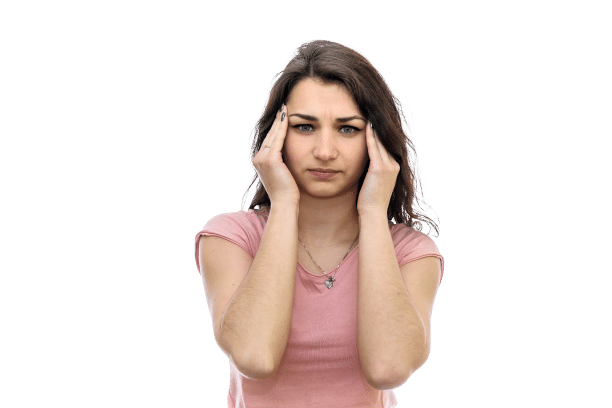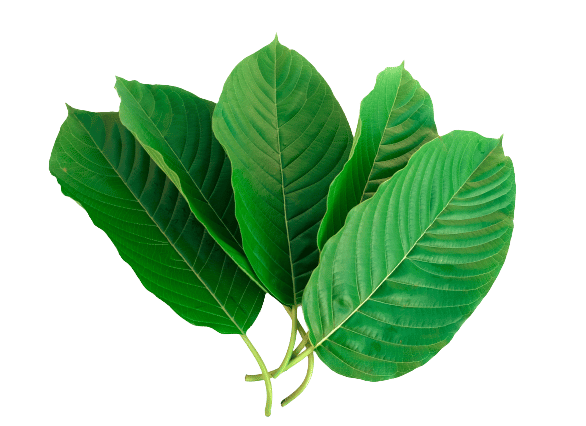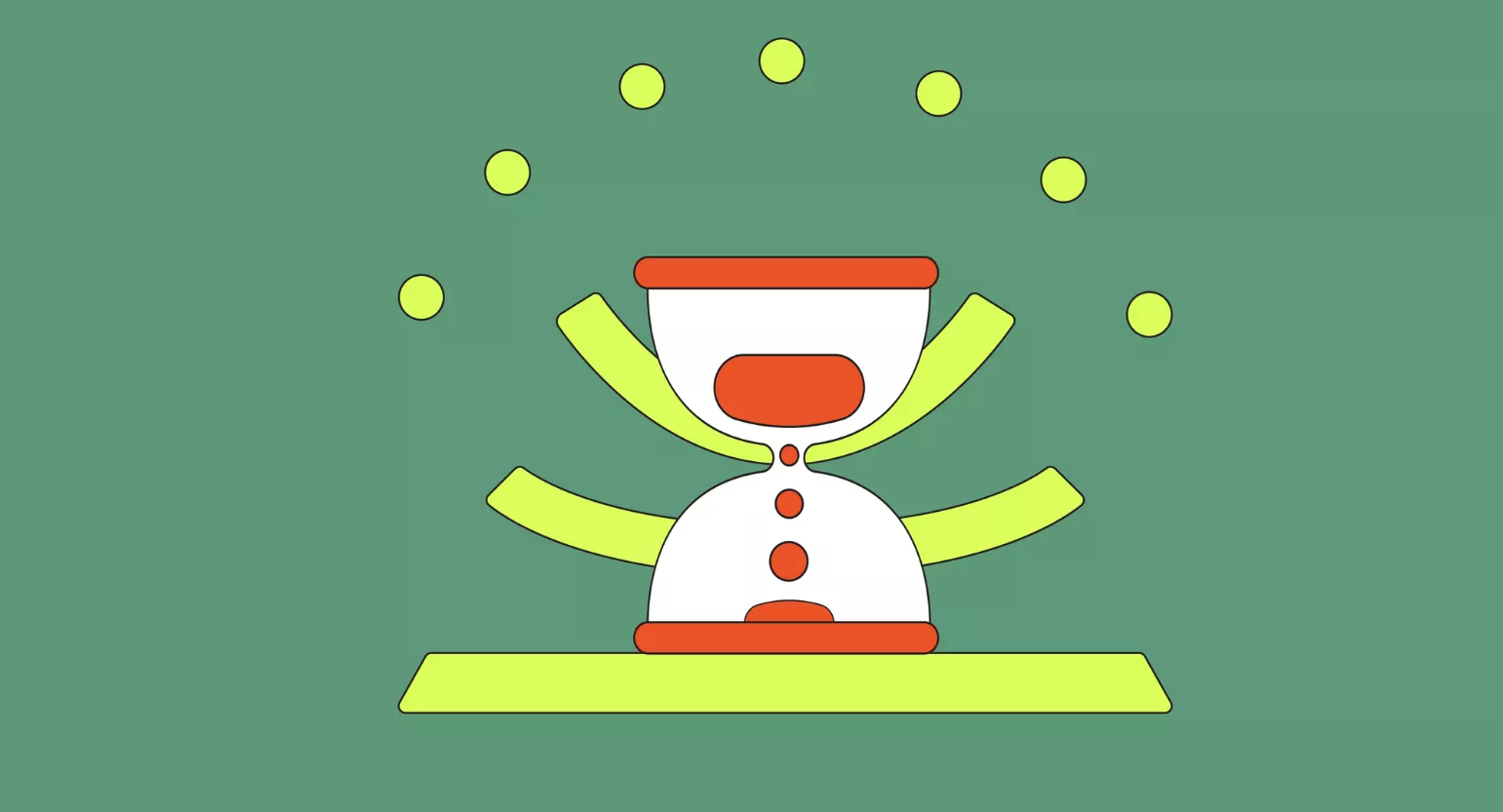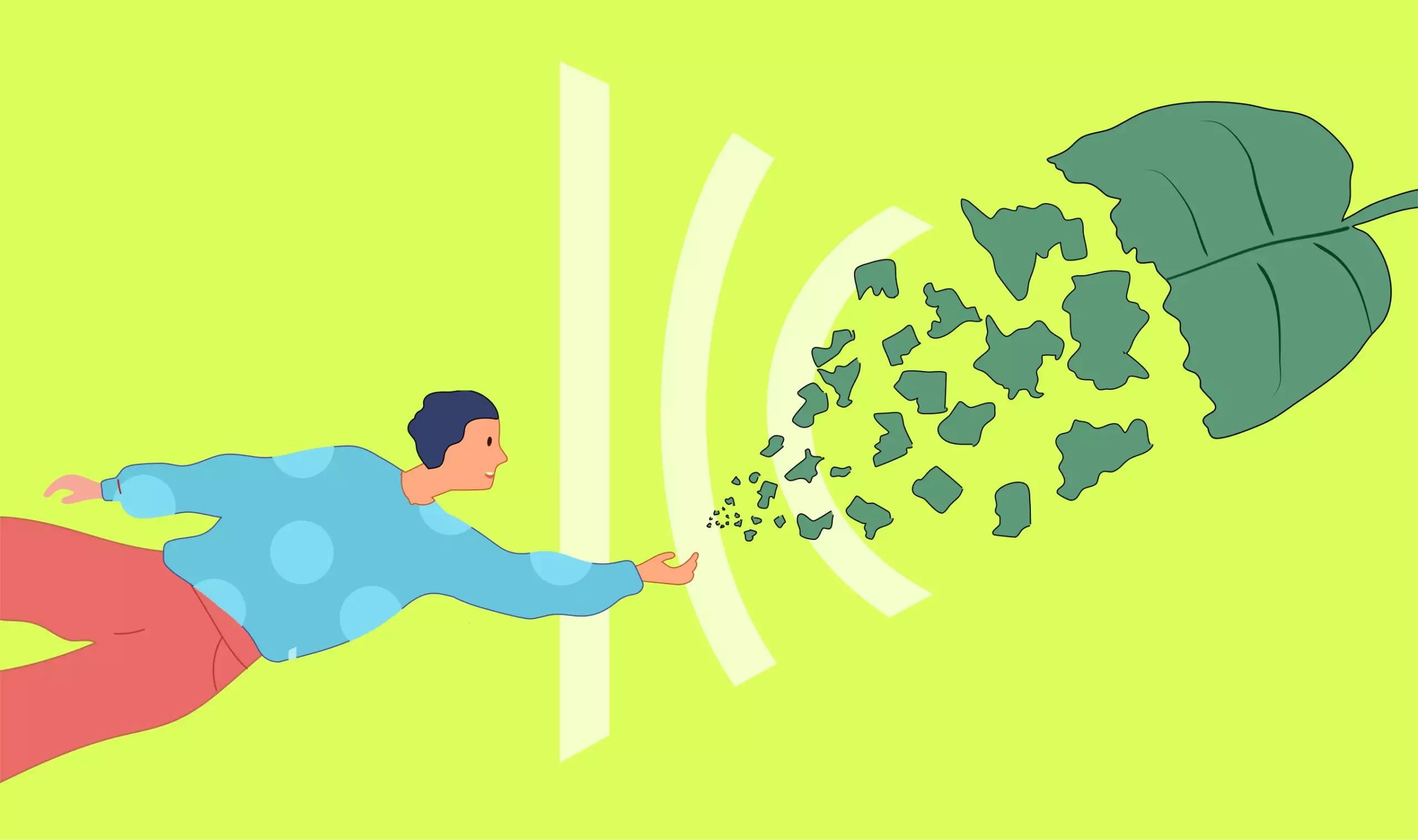Can Kratom Help With Migraine Headache Pain?
Kratom may be able to alleviate acute forms of pain during a migraine attack, but it’s best to use it sparingly. While kratom is not an opiate, it does activate the opiate receptors — which poses a couple of potential problems.
Mitragynine and 7-hydroxymitragynine, two of the main alkaloids in kratom, activate opioid receptors and are highly effective at blocking different types of pain [1]. In fact, in some studies, 7-hydroxymitragynine was more potent than morphine [2].
Opiates are the most common form of treatment for migraine patients that end up in the ER [3]. However, overuse of opiates can actually cause transformed or chronic migraines (TM/CM) [4].
Best Kratom Strains For Migraines & Headaches
Because of their high levels of mitragynine and 7-hydroxymitragynine, red-vein kratom strains are best for pain relief. These are commonly used for opioid withdrawal due to their strong effects on the opioid receptors.
The best kratom strains for pain include:

Red Maeng Da Kratom
As the strongest strain available, Red Maeng Da may provide users with a quick burst of mild to severe pain relief. Although it can’t cure migraines and headaches, it may offer substantial relief. It’s best not to use it every day, though, as this could lead to increased migraines.
→ Find This Strain on Star Kratom.

Red Borneo Kratom
Red Borneo is believed to be a particularly potent painkiller. However, it doesn’t typically provide the same pain-relieving qualities as Red Maeng Da. Therefore, Red Borneo is best for tackling mild to moderate migraines.
→ Find This Strain on Kona Kratom.

Red Bali Kratom
Chronic pain sufferers may find relief with Red Bali. Just like Maeng Da, this is one of the most potent strains for battling pain. It’s even been used to wean people off prescription medication. Make sure you don’t rely on Red Bali for headaches on a daily basis.
→ Find This Strain on VIP Kratom.
Other Benefits of Using Kratom
Kratom provides other benefits, too, though these depend on the strain.
White strains are more energizing while green strains offer a nice balance between the two.
Other benefits that users may experience include:
- Energy Boost
- Enhanced Focus
- Heightened Libido
- Mood Elevation
- Relaxation
- Stress Relief

What Are The Side Effects of Kratom?
Any substances, herbal or pharmaceutical, that have active pharmacological effects on the body bring some risk of side effects — kratom is no exception.
The most common side effects of kratom include:
- Anxiety or nervousness
- Constipation
- Irritation
- Nausea
- Tongue numbness
- Vomiting
Anyone new to kratom might get an upset stomach the first few times, so just make sure you eat first to help minimize it and start with a low dose.
It’s wise to use kratom a few times before taking it while you’re experiencing a migraine to understand how it affects your body first.
What’s the Dose of Kratom for Migraines & Headaches
The kratom dosage varies from person to person, though no one should take more than 10 g.
Start with a small amount, about 2 grams of the powder, and wait to see how you feel before taking any more. Keep in mind, kratom is a stimulant in lower doses. Once you get to a dose of around 5 or 6 grams the effects flip and the herb has more of a relaxing or sedative effect.
Most people who use kratom for migraines or other forms of headaches take around 5 or 8 grams of kratom. This is enough of a dose to have a noticeable analgesic action without being overly sedative or nauseating.
Some find the sedative nature of higher-dose kratom useful when alleviating migraine headaches. One of the best ways to get through a migraine attack is to sleep it off.
Related: Can You Overdose on Kratom?
Migraines 101: What is a Migraine Headache?
A migraine is a severe form of headache that involves other, seemingly unrelated side effects like nausea, sensitivity to light and sound, loss of taste, tremors, and extreme fatigue.
Migraine attacks tend to run in the family — so if your mother, father, or members of your extended family suffer from migraines — you’re more likely to suffer from them too.
Scientists are still struggling to understand exactly what causes migraine headaches. While there are several leading theories, the truth is that we simply don’t know for sure. To make things even more complicated, not all migraines are the same, and it’s likely the underlying cause is different for everybody.
Key Signs of a Migraine
- Fatigue or waves of depression
- Irritability
- Nausea & vomiting
- Pain on one or both sides of the head
- Pulsing or throbbing pain
- Sensitivity to sound, light, touch, and smell
- Sudden changes in mood
Here are some of the leading theories for what causes migraine headaches:
1. Excess Serotonin Release
This theory suggests migraines may be caused by a widespread “dumping” of serotonin from platelet cells in the blood [5]. The flood of serotonin causes blood vessels in the brain to widen, causing severe pain and sensitivity until the serotonin can be cleaned up.
2. Spasms in the Cerebrovascular System
Another theory suggests that migraine could be caused by a sudden spasm of the arteries feeding blood to the brain.
The trigeminal nerve (an important nerve that controls the autonomic nervous system in the brain and other areas of the body) could become activated by pro-inflammatory molecules.

Migraines vs. Headaches
Migraines and headaches are not the same things.
We often hear the word “headache” used generically, but there are many different kinds — cluster, thunderbolt, hormonal, tension, rebound, sinus, migraine, and exertion headaches, just to name a few.
Headaches range from mild to severe, but migraines are always severe. They’re debilitating — causing throbbing, burning, or stinging pain in the head. Other symptoms often accompany the pain, including nausea, vomiting, temporary vision loss, sensitivity to light and sound, seeing spots or flashing lights, and dizziness.
Migraines typically only affect one side of the head and can last anywhere from a few minutes to a few hours.
An interesting aspect of migraines is the prodromal stage that sets in an hour or two before the migraine attack begins.
People who get migraines often can usually recognize these warning signs — such as waves of depression, unusual cravings, changes in vision, nausea, sweating, or excessive yawning. This prodromal stage is not common with most other forms of headaches.
Comparison: Migraines vs. Headaches
| Migraines | Headaches | |
| Characteristics of Pain | Intense throbbing or pulsing | Dull pressure or achiness |
| Location of the Pain | Usually on one side of the head only (but not always) | Usually felt throughout the head |
| Vision Disturbances | Sensitivity to light and spots forming in the vision | Rarely involves changes in vision |
| Nausea & Vomiting | Very common | Uncommon |
Related: Migraines vs. Cluster Headaches — What’s the Difference?
Common Migraine Triggers
Not everyone is able to narrow down their triggers, and some people might not have any. It’s difficult to find the causes since sometimes the migraine doesn’t show up right away.
Over time, it’s possible to see the patterns, if there are any. Some people do elimination diets and discover certain foods may be a trigger, others switch to fragrance-free soaps and shampoos and notice their migraines become less frequent.
Migraine sufferers gain some power by knowing their triggers since they can try to avoid things that cause their migraines.
Some common migraine triggers include:
- Aged Cheeses
- Alcohol
- Bright Lights
- Chocolate
- Fatigue
- Hunger
- Loud Noises
- MSG
- Strong Scents
The 4 Stages of a Migraine Attack
There are four stages of a migraine.
Learning to recognize them is critical because treatments vary depending on the stage.
Stage 1: Prodrome
About two days before the migraine, a prodrome can come with neck stiffness, food cravings, yawning, constipation, and mood swings. This may also be the best time to take kratom, giving it a chance to stop the migraine in its tracks.
Stage 2: Aura
This stage usually happens right before a migraine, typically lasts 20 to 60 minutes, and causes sensory, motor, and visual disturbances.
Stage 3: Migraine Attack
The main attack can last anywhere from 4 to 72 hours unless you seek treatment. During this period, you’re prone to nausea and vomiting.
Stage 4: Postdrome
The headache is over, but you’ll feel completely drained. You could also revert to stage three at any time during this 24 to a 48-hour cycle.
How Are Migraines Treated?
If you seek out traditional help, you’ll generally be placed on pain-relieving medications and/or preventative medications. The severity of your migraines will determine what type of medication is prescribed.
Natural Migraine Treatments
There are also a wide variety of natural treatments. Some of these may help, but you’ll need to experiment to discover what types and in what quantities. Taking a high dose of B-2 (riboflavin) may help, along with:
Pharmaceutical Migraine Treatments
Pharmaceuticals can provide you with lots of pain relief. Of course, there are also side effects to many of these vasorelaxants or serotonergic medications. Make sure to fully discuss these options with your doctor, including their pros and cons, before you begin taking any of them.
- NSAIDs
- Ergot alkaloids
- Divalproex/Sodium Valproate
- Eletriptan
- Frovatriptan
- Almotriptan
- Metoprolol
- Naratriptan
- Propranolol
- Rizatriptan
- Sumatriptan
- Topiramate
- Zolmitriptan

Comparing The Top Kratom Brands
| Top Kratom Vendors | Pros | Cons | Coupon Codes & Discounts |
| Kona Kratom | • Extensive product lineup • Fresh batches • Consistently high product potency • Exceptionally fast shipping • AKA certified | • Only ships within the US | Use KRATOMORG for 15% off |
| Star Kratom | • Most Affordable • Selection of rare kratom strains • AKA certified | • Less selection than other popular vendors | Use KRATOMORG for 10% off |
| VIP Kratom | • Specializes in premium kratom • Options for capsules & raw powder for most strains • AKA certified | • Premium products mean premium pricing | Use KRATOM10 for 10% off |
Summary: Can Kratom Help Migraines & Headaches?
Kratom helps many people living with chronic pain. You’re less likely to get addicted than to traditional medication, and you won’t overdose.
Kratom is also generally easier to get, as long as you live in a state where it’s legal.
If you’re struggling with migraines or other headaches, kratom might help in a pinch. However, existing evidence suggests that long-term kratom usage could lead to increased migraines.
Be careful to use it responsibly, and always buy from a reliable source.
- Watanabe, K., Yano, S., Horie, S., & Yamamoto, L. T. (1997). Inhibitory effect of mitragynine, an alkaloid with analgesic effect from Thai medicinal plant Mitragyna speciosa, on electrically stimulated contraction of isolated guinea-pig ileum through the opioid receptor. Life sciences, 60(12), 933-942.
- Matsumoto, K., Horie, S., Ishikawa, H., Takayama, H., Aimi, N., Ponglux, D., & Watanabe, K. (2004). Antinociceptive effect of 7-hydroxymitragynine in mice: Discovery of an orally active opioid analgesic from the Thai medicinal herb Mitragyna speciosa. Life sciences, 74(17), 2143-2155.
- Dodson, H., Bhula, J., Eriksson, S., & Nguyen, K. (2018). Migraine treatment in the emergency department: alternatives to opioids and their effectiveness in relieving migraines and reducing treatment times. Cureus, 10(4).
- Bigal, M. E., & Lipton, R. B. (2009). Excessive opioid use and the development of chronic migraine. Pain, 142(3), 179-182.
- Cloutier, N., Allaeys, I., Marcoux, G., Machlus, K. R., Mailhot, B., Zufferey, A., … & Boilard, E. (2018). Platelets release pathogenic serotonin and return to circulation after immune complex-mediated sequestration. Proceedings of the National Academy of Sciences, 115(7), E1550-E1559.







